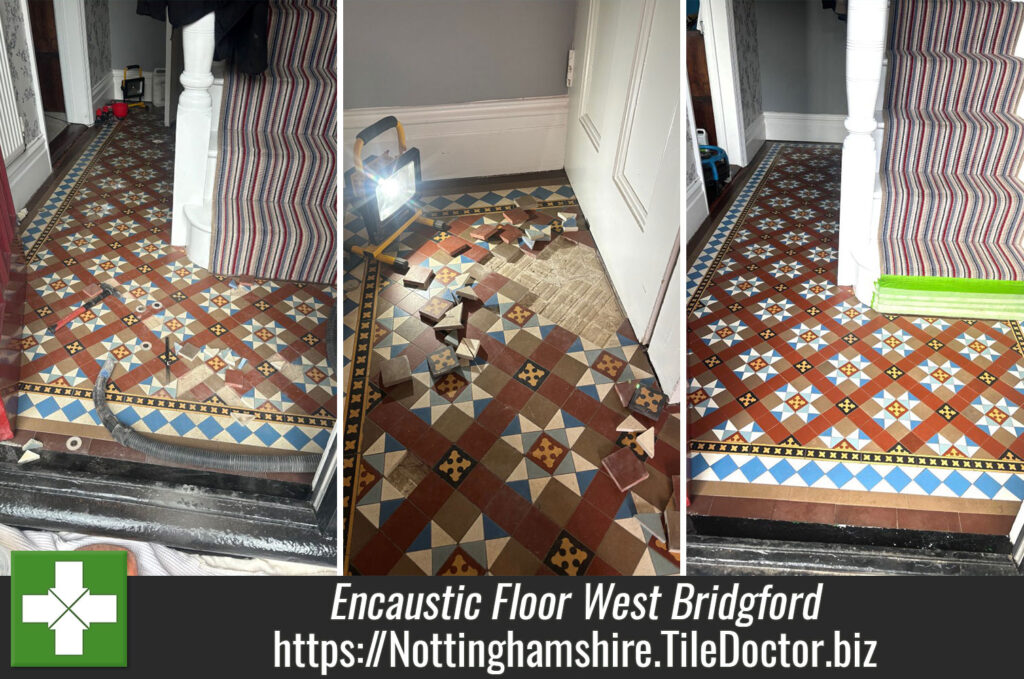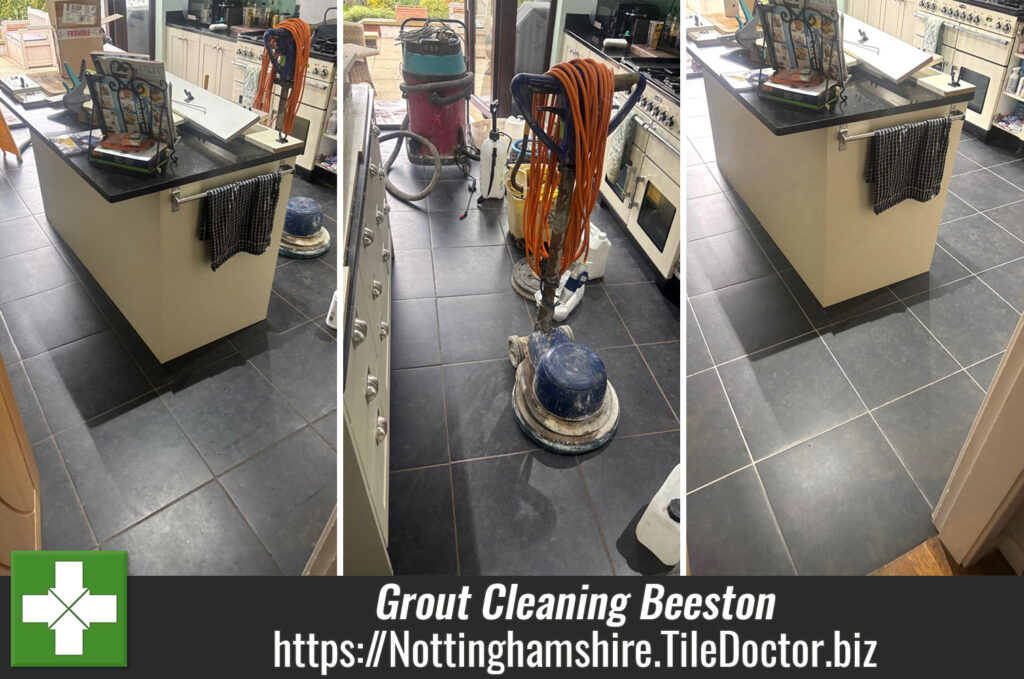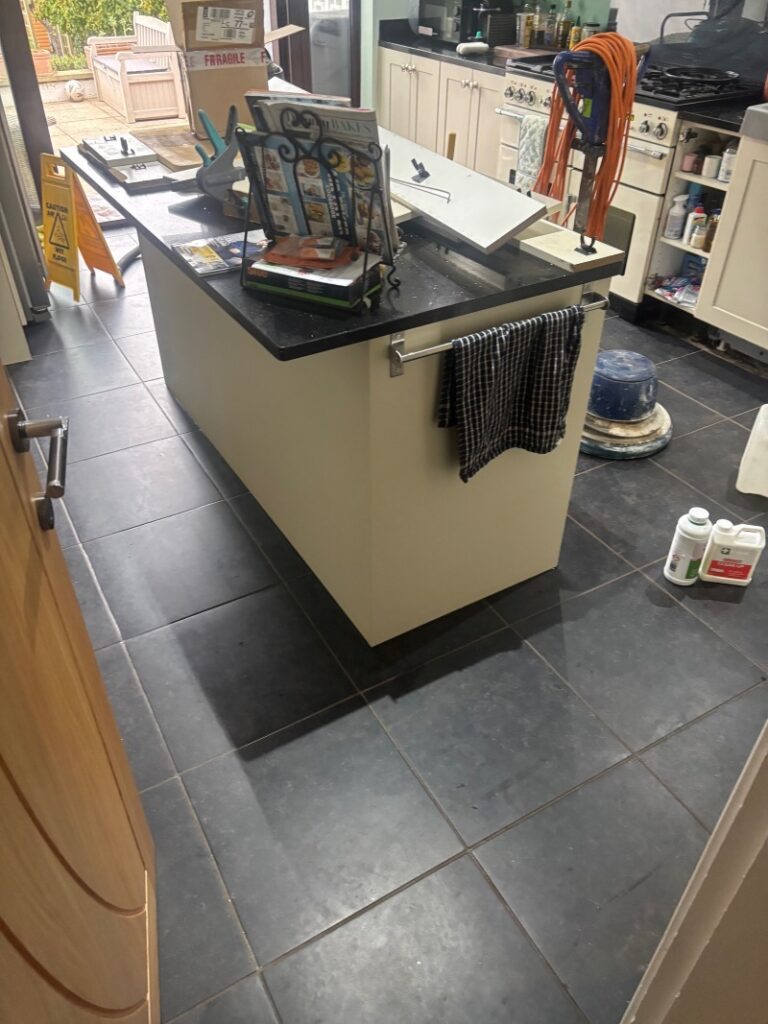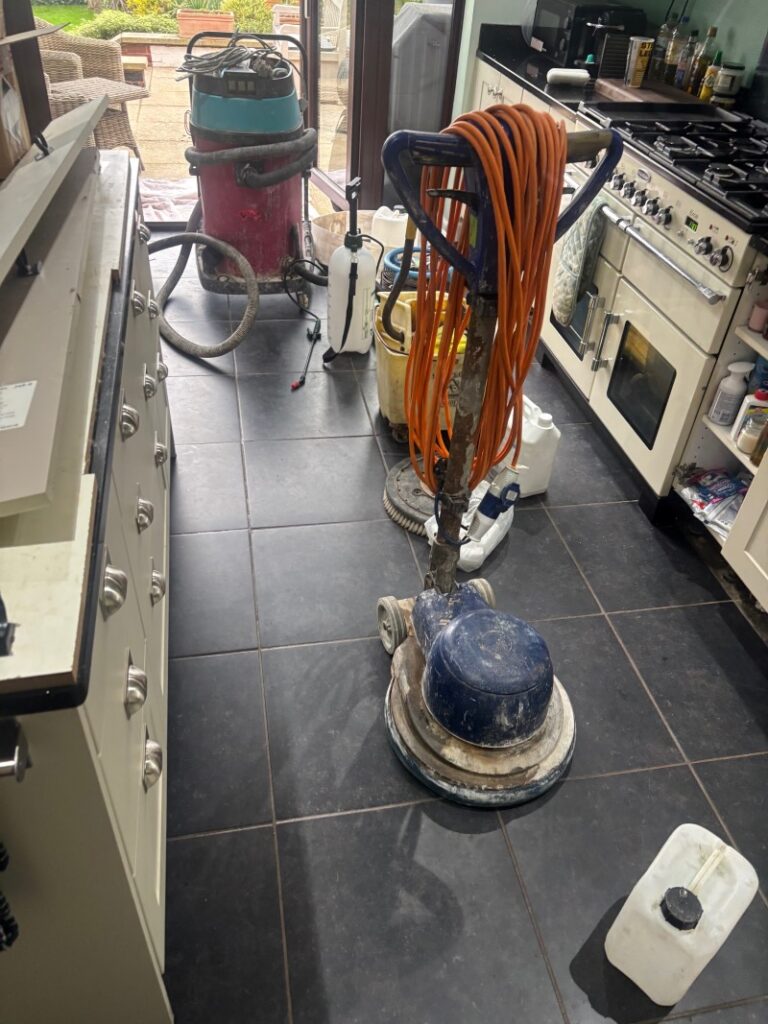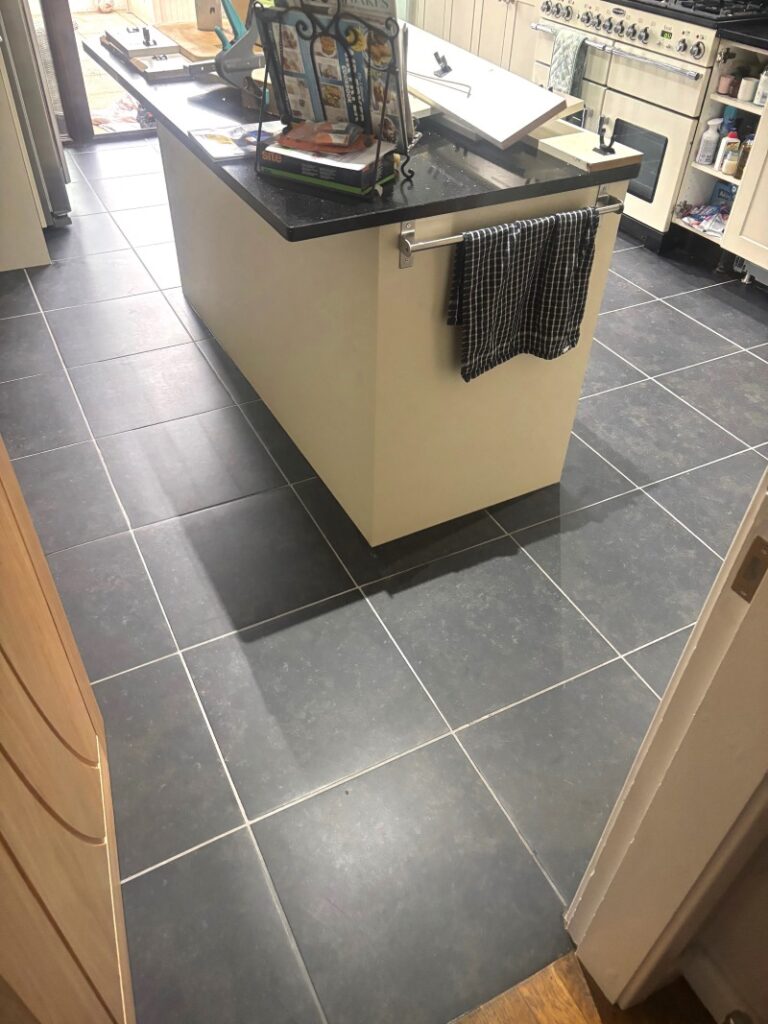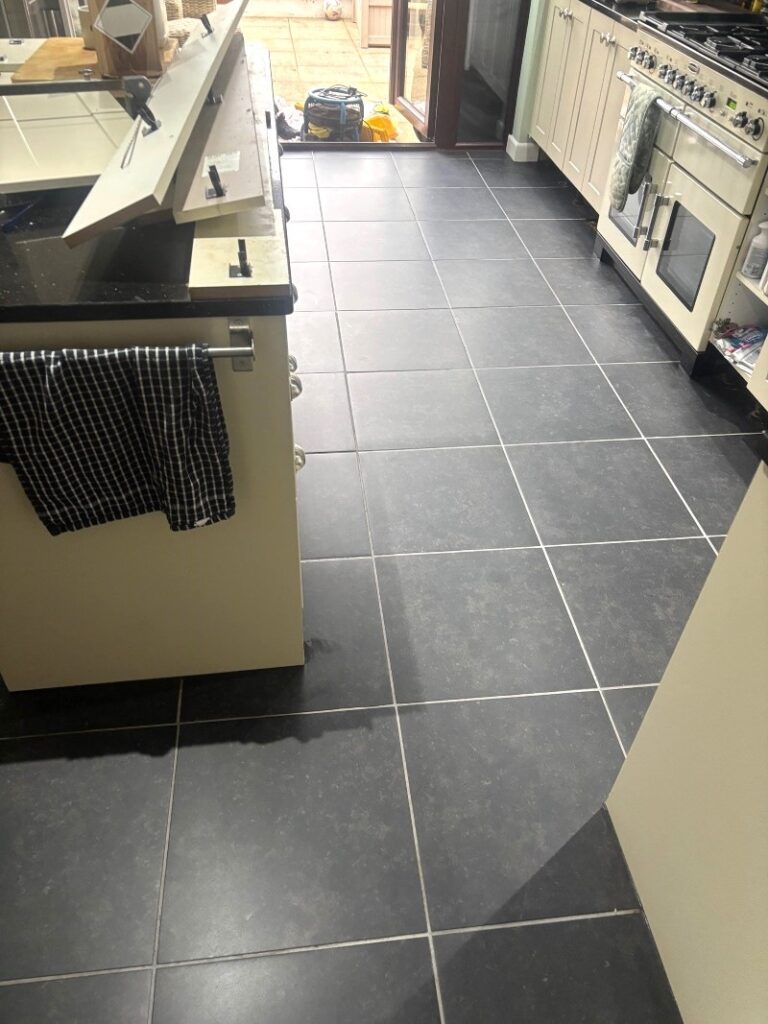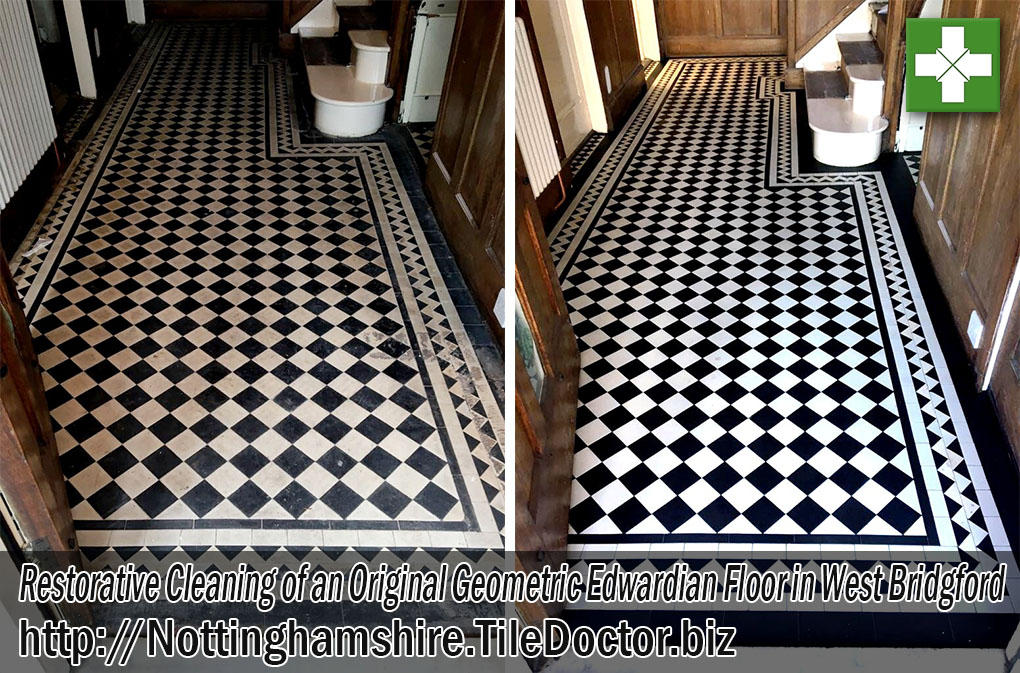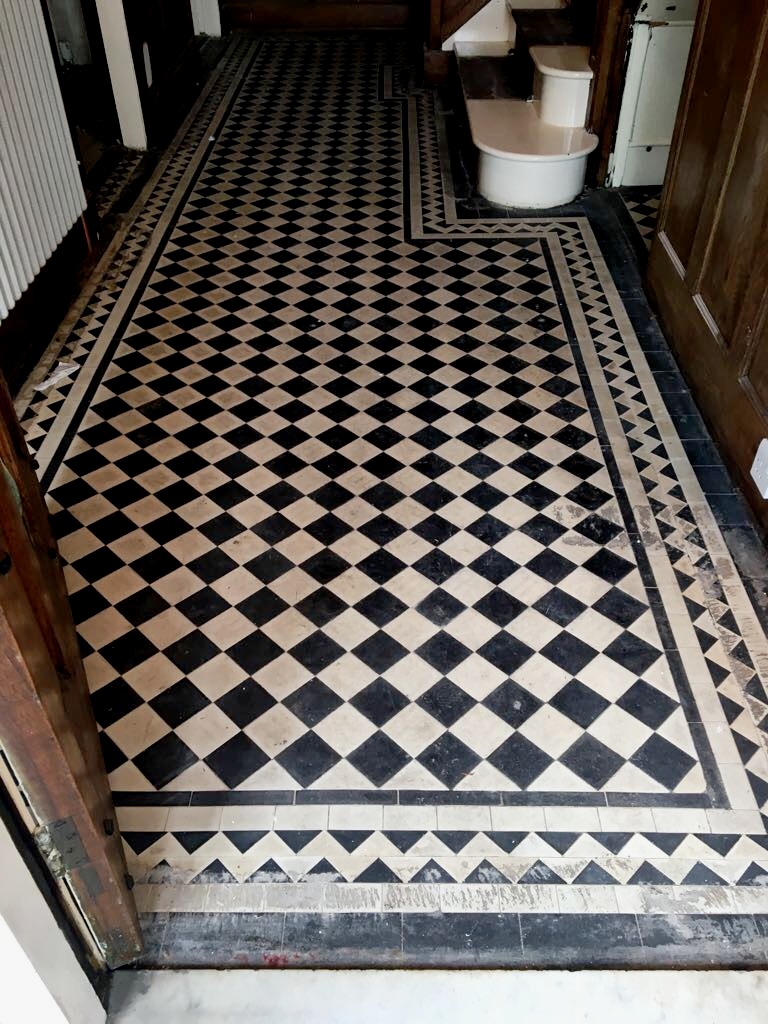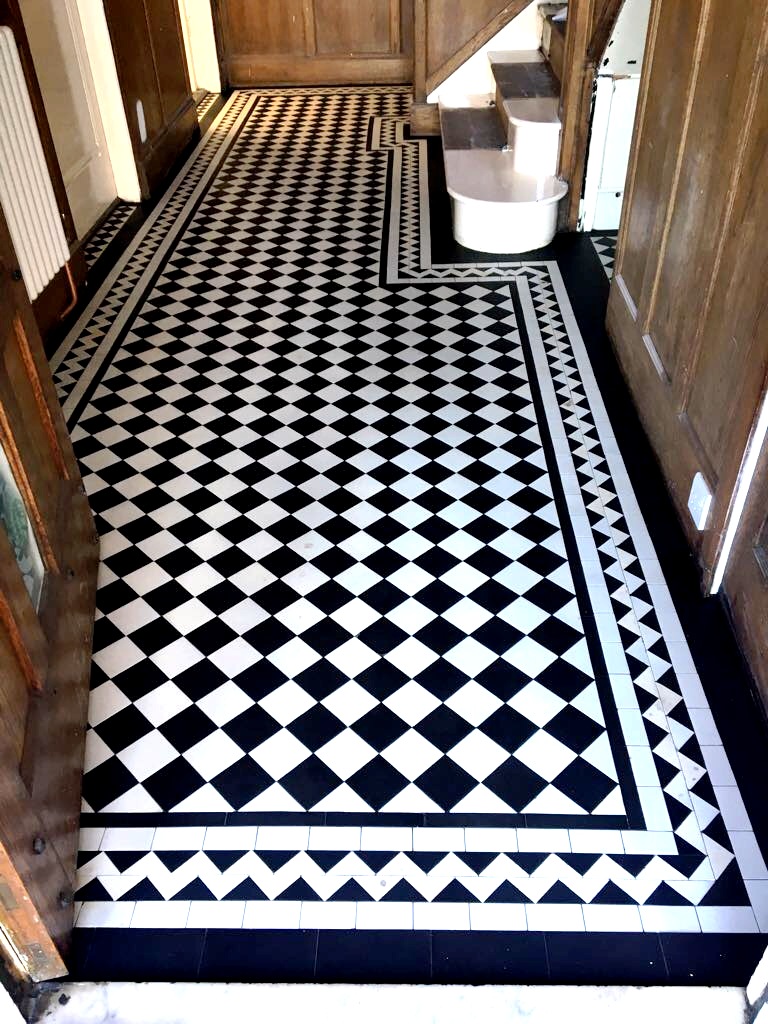Encaustic Tiled Victorian Floor Renovated in West Bridgford
Here we have an encaustic tiled hallway floor from the Victorian era laid in a beautiful geometric pattern at a property in West Bridgford Nottingham. Given its age the floor had survived well however there were many loose tiles that needed attention and it was overdue a restorative clean and fresh seal.
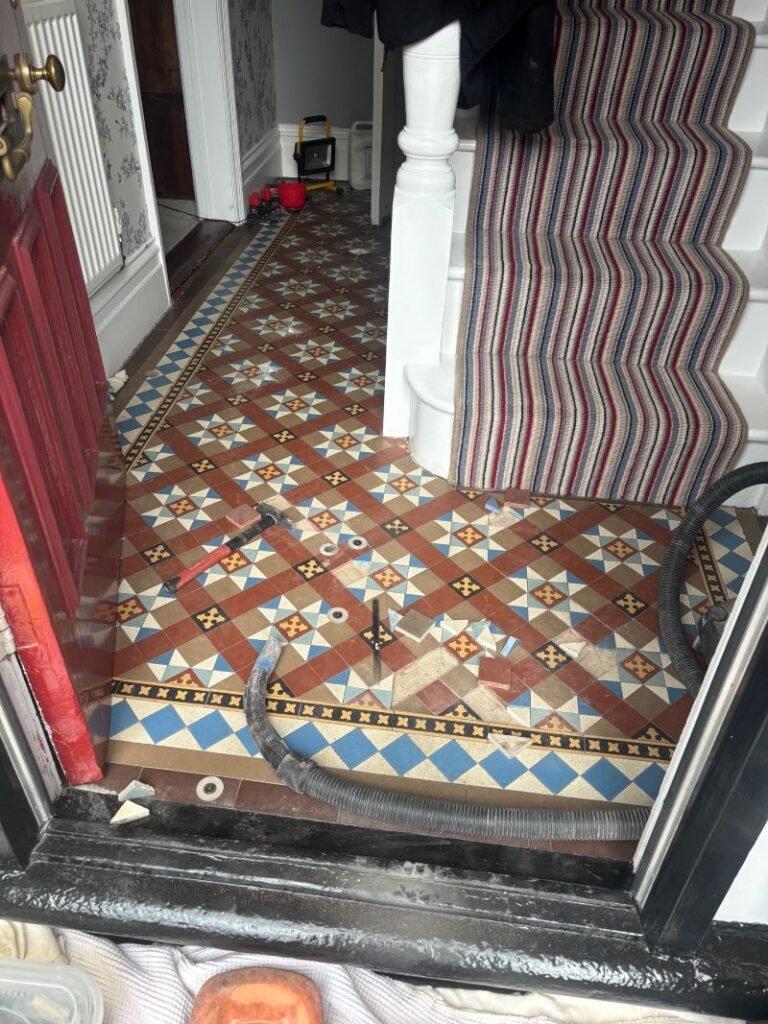
Having visited the property, I was able to ascertain the extent of the repairs needed and created a detailed quotation for its restoration. My quotation was accepted and a date agreed for the work to start.
Cleaning and Repairing a Victorian Encaustic Tiled Floor
Before cleaning the tiles and re-sealing, the floor needed to be structurally sound so the first day was spent pulling out the 150 or so loose and damaged tiles. This was followed by removing the old adhesive and cleaning and repairing the foundation screed ready for the next step. I was able to re-use some of the original tiles, but I had also sourced replacements which needed to be cut to fit the pattern.
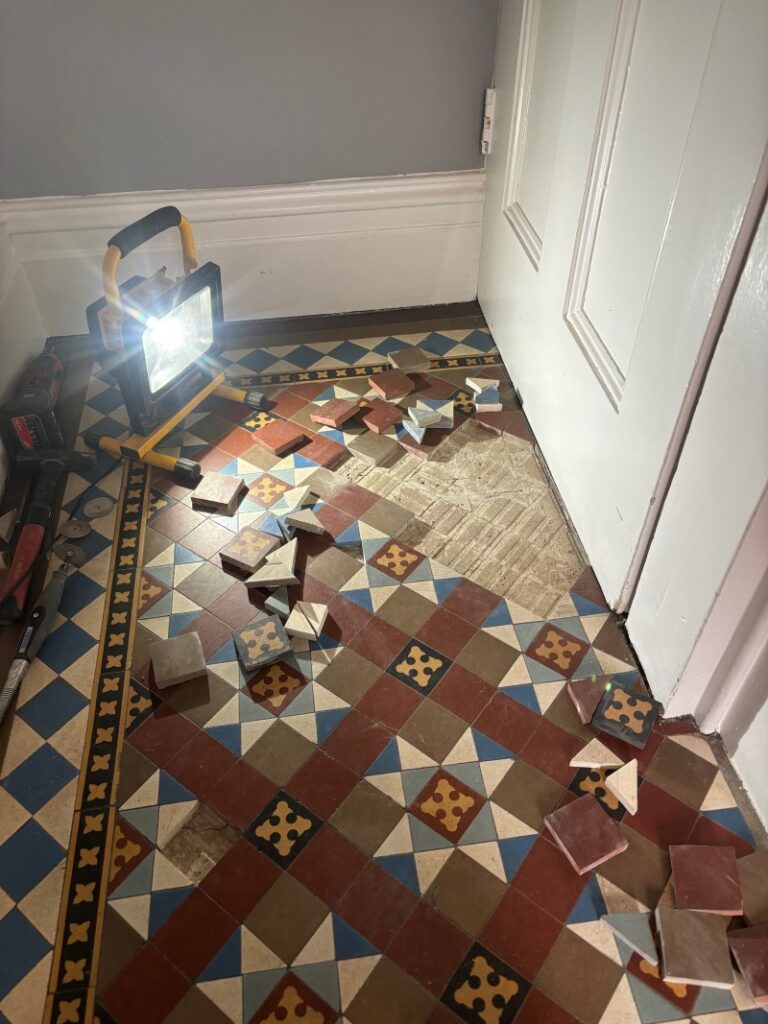 |
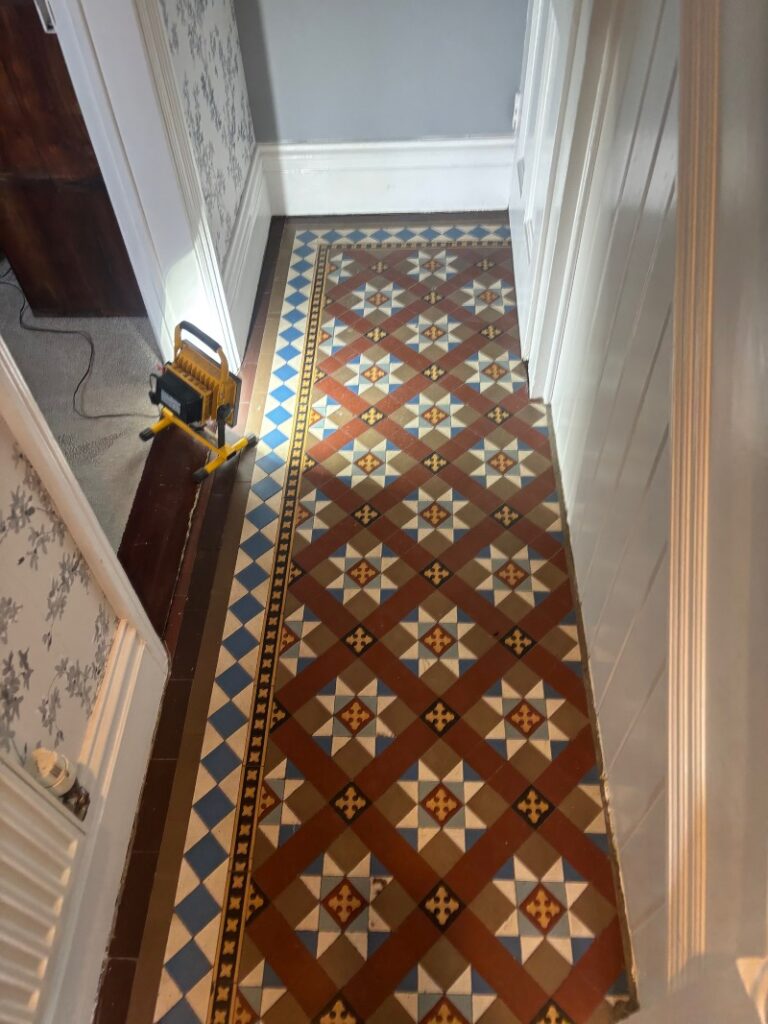 |
The tiles were dry fitted into position to ensure the geometric pattern of the original floor was replicated. Only then were they fixed into place using rapid set adhesive and grouted.
The tiles were left to set overnight, and I returned the next day to deep clean the whole floor. Tiled floors of this age don’t have the benefit of a damp proof membrane and so they can suffer from damp rising through the foundation. Because of this I like to use low moisture gel cleaning products to clean old floors, this keeps water usage to a minimum, increases drying times and reduces the likelihood of efflorescent salts appearing later.
In this case I gave the floor a thorough deep clean using Tile Doctor Oxy-Gel and Acid Gel combined. These are applied to the tiles and then scrubbed in with a coarse 200-grit diamond pad to remove the years of ingrained dirt.
The resulting slurry was removed with a wet vacuum and wiped down with microfibre cloths dampened with a small amount of water. Again, this method minimises moisture penetration into the floor.
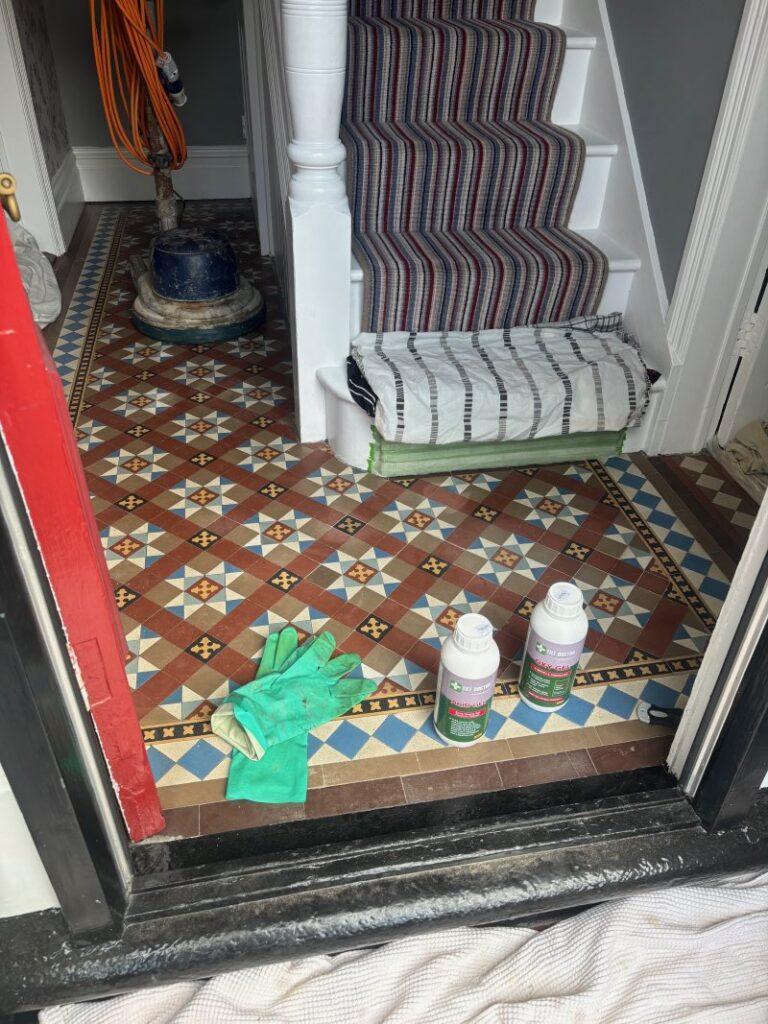
The low-moisture system has the added benefit of keeping the tiles reasonably dry, so I was able to apply the sealer later that afternoon.
Sealing an Encaustic Victorian Tiled Floor
To seal the tiles Tile Doctors X-Tra Seal was applied. It’s a modern oil-based sealer that improves colour and is rated for external as well as internal use making it ideal for a hallway. Another feature of this product is that it’s fully breathable which is very important for period floors and won’t restrict moisture transmission through the tile.
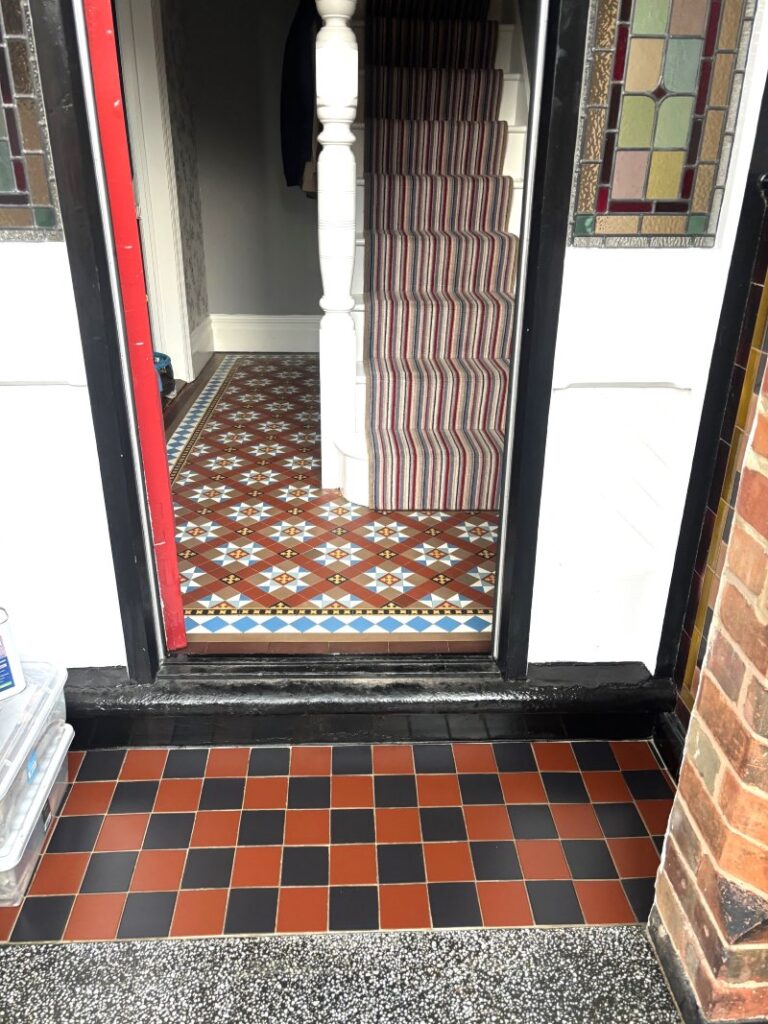 |
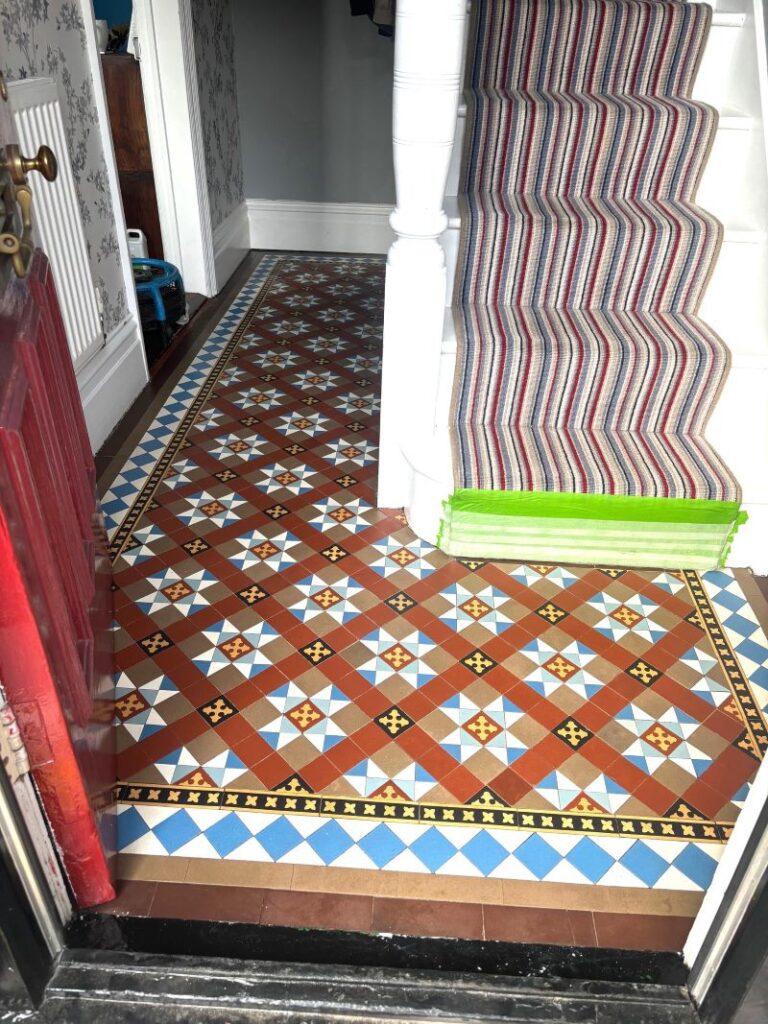 |
For aftercare I recommended Tile Doctor Neutral Tile Cleaner which is a pH neutral floor cleaner which won’t degrade the protective sealer.
Professional Restoration of an Encaustic Victorian Tiled Hallway in Nottinghamshire
Encaustic Tiled Victorian Floor Renovated in West Bridgford Read More »

